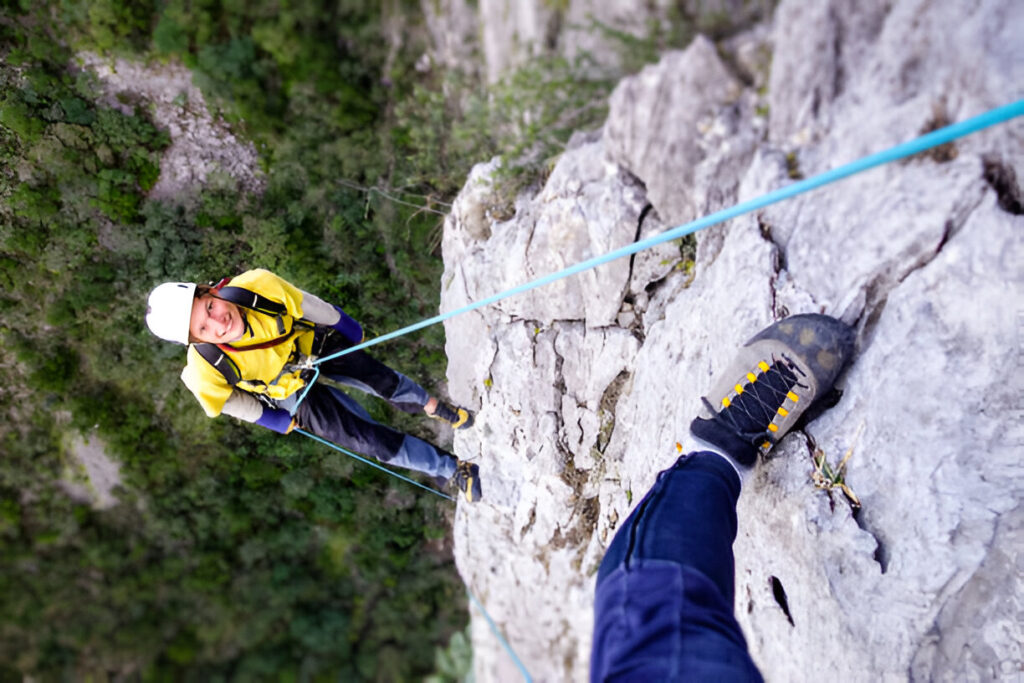Living abroad can be an exhilarating adventure, especially if you’re the type who loves to embrace high-risk activities like skydiving, scuba diving, or rock climbing. While these activities offer excitement and a chance to push your limits, they also come with unique risks that require careful consideration when it comes to insurance coverage. This guide provides detailed information on how expat insurance covers high-risk activities, what to look for in your policy, and practical tips for ensuring you’re adequately protected.

1. Understanding High-Risk Activities
1.1. Definition of High-Risk Activities
High-risk activities are those that involve a greater chance of injury or damage compared to more conventional activities. Examples include:
- Extreme Sports: Skydiving, bungee jumping, base jumping, and paragliding.
- Adventure Sports: Rock climbing, mountaineering, white-water rafting, and scuba diving.
- Motorized Activities: Motorcycle racing, off-road biking, and motorboat racing.
1.2. Why High-Risk Activities Pose Insurance Challenges
High-risk activities pose several challenges for insurance coverage:
- Increased Risk of Injury: The likelihood of accidents or injuries is higher, which can lead to higher medical costs and complex claims.
- Specialized Coverage Needs: Standard health insurance policies may not cover injuries or accidents related to high-risk activities.
- Policy Exclusions: Many insurance policies exclude coverage for high-risk activities, requiring specialized plans.
2. Types of Insurance Coverage for High-Risk Activities
2.1. Travel Insurance
Coverage Details
Travel insurance is designed to cover unexpected events that occur while traveling, including:
- Medical Emergencies: Coverage for emergency medical treatment and hospitalization due to accidents or illnesses.
- Emergency Evacuation: Costs associated with evacuating you to a medical facility if necessary.
- Trip Cancellation: Reimbursement for trip costs if you need to cancel due to a covered event.
High-Risk Activity Considerations
- Activity Coverage: Ensure your travel insurance policy specifically includes coverage for the high-risk activities you plan to undertake.
- Activity Exclusions: Be aware of any exclusions or limitations related to high-risk activities.
2.2. Expat Health Insurance
Coverage Details
Expat health insurance provides comprehensive health coverage for expatriates living abroad, including:
- Routine Medical Care: Coverage for regular check-ups, doctor visits, and preventive care.
- Emergency Medical Treatment: Coverage for emergencies, including hospital stays and surgeries.
- Prescription Medications: Coverage for prescribed medications and treatments.
High-Risk Activity Considerations
- Activity Endorsements: Some expat health insurance policies allow endorsements or add-ons for high-risk activities.
- Global Coverage: Ensure the policy provides global coverage, including the regions where you engage in high-risk activities.
2.3. Adventure Sports Insurance
Coverage Details
Adventure sports insurance is tailored for individuals participating in extreme or adventure sports, covering:
- Medical Expenses: Costs associated with injuries or medical treatment resulting from adventure sports.
- Accidental Death: Benefits in the event of death due to an adventure sport accident.
- Emergency Evacuation: Coverage for evacuation due to injuries sustained during adventure sports.
High-Risk Activity Considerations
- Specialized Coverage: Look for policies that specifically cover the adventure sports you participate in.
- Comprehensive Protection: Ensure the policy offers comprehensive protection, including medical, evacuation, and liability coverage.
3. Key Considerations When Choosing Insurance for High-Risk Activities
3.1. Assess Your Activities
Before choosing an insurance policy, assess the specific high-risk activities you plan to engage in:
- Activity Type: Determine whether your activities are categorized as extreme, adventure, or motorized.
- Frequency and Intensity: Consider how often and intensely you will participate in these activities.
3.2. Verify Coverage
Ensure your insurance policy provides adequate coverage for your high-risk activities:
- Policy Inclusions: Verify that the policy includes coverage for your specific activities.
- Coverage Limits: Check the coverage limits for medical expenses, evacuation, and other relevant aspects.
3.3. Understand Exclusions
Be aware of any exclusions or limitations related to high-risk activities:
- Exclusions List: Review the list of exclusions to ensure your activities are covered.
- Pre-Existing Conditions: Understand how pre-existing conditions may impact your coverage for high-risk activities.
3.4. Consider Add-Ons or Endorsements
Many insurance providers offer add-ons or endorsements for high-risk activities:
- Activity-Specific Endorsements: Look for endorsements that specifically cover your chosen high-risk activities.
- Customizable Coverage: Choose policies that allow customization to suit your specific needs.
3.5. Evaluate the Provider’s Reputation
Choose an insurance provider with a strong reputation for handling claims related to high-risk activities:
- Provider Reviews: Research reviews and ratings of the insurance provider.
- Claims Process: Understand the provider’s claims process and their track record for handling high-risk activity claims.
4. Case Studies: Real-Life Scenarios
4.1. Case Study 1: Skydiving Injury in Australia
Mark, an expat in Australia, experienced a skydiving accident that required emergency medical treatment. His travel insurance policy included coverage for skydiving, allowing him to receive the necessary care and emergency evacuation without incurring substantial out-of-pocket costs.
4.2. Case Study 2: Scuba Diving Accident in Thailand
Sarah, who was living in Thailand, suffered an injury while scuba diving. Her adventure sports insurance policy provided comprehensive coverage for medical expenses, evacuation, and accidental death benefits, ensuring she was well-protected during her recovery.
4.3. Case Study 3: Rock Climbing Incident in Switzerland
James, an expat in Switzerland, was involved in a rock climbing accident. His expat health insurance policy had an endorsement for adventure sports, covering the high medical costs and evacuation needed for his treatment.
5. Tips for Managing Risk and Ensuring Adequate Coverage
5.1. Prioritize Safety
Reducing risk is crucial for minimizing the likelihood of accidents:
- Follow Safety Protocols: Adhere to all safety guidelines and protocols for your high-risk activities.
- Use Proper Equipment: Ensure you use appropriate and well-maintained equipment for your activities.
5.2. Stay Informed
Stay informed about the insurance options and coverage available:
- Research Policies: Regularly review and update your insurance policy to ensure it meets your current needs.
- Understand Coverage Changes: Be aware of any changes in coverage or policy terms.
5.3. Consult with Insurance Experts
Seek advice from insurance professionals to ensure you have the right coverage:
- Insurance Brokers: Consult with brokers who specialize in high-risk activity insurance.
- Expat Insurance Advisors: Work with advisors who understand the unique needs of expatriates engaging in high-risk activities.
Conclusion
Engaging in high-risk activities while living abroad requires careful consideration of your insurance coverage. By understanding the types of insurance available, assessing your activities, verifying coverage, and staying informed, you can ensure you have adequate protection for your adventurous pursuits. Prioritizing safety and consulting with insurance experts will help you manage risks effectively and enjoy your high-risk activities with peace of mind.
Get your personalized quote today by clicking here PURL and feel free to contact us with any questions—your peace of mind – while traveling abroad is just a step away!






